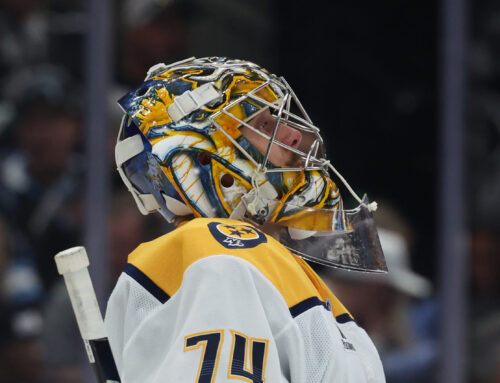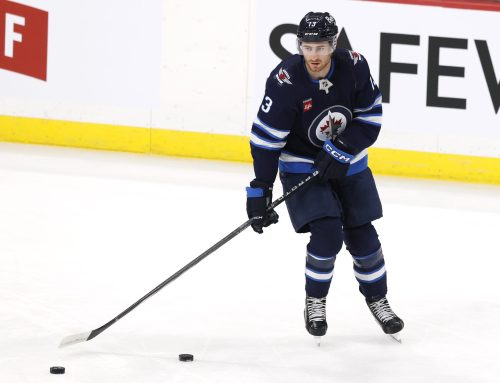
I tried to get cute and write an interesting opening that would segway nicely into my topics for today. It didn’t go well. So you get this instead. Let’s take a walk down the “Bounceback” ally and see if we can’t target a few candidates to hit back after some tougher campaigns.
Mat Barzal
There was always going to be an adjustment process on Long Island. The departure of John Tavares was going to impact Barzal more than anyone else. He lost his captain. His insulation. His security blanket. JT is also one of the very best producers on the man-advantage. The result of that loss resulted in a 23 point decrease – nine from the man-advantage, from his Calder winning 2017-18 campaign.
There are hopes of a rebound just around the corner though. True, the squad will still be utilizing a Barry Trotz-led tactical approach which means muted opportunities for opponents and subsequently fewer offensive risks are taken. BUT! Barzal remains an elite distributor. His shot-assist rates are right at the top of the pile. He carries the puck out his end with almost as much consistency as he does crossing his opponent's blue line. Zone entries and exits are indicators of play-drivers, and play-drivers often find their way back to productive ways.
Additionally, his most common linemates last season – Anthony Beauvillier and Anders Lee both witnessed substantial regressions in their conversion rates. Coming off of a career-season, Lee saw his shooting percentage dip from 19.3 to 13.7. He’s a career 16.9 percent finisher so we can likely expect him to see another point or three added on next year. Beauvillier was in just his third season but saw his rate dip from 16.4 Percent in 2017-18 to 11.5 percent last season. Beauvillier and Barzal have had chemistry from day one and are both due for improved metrics.
Finally, Barzal suffered through some tough puck himself last year. He began the season with 12 goals and 38 points through his first 40 contests. He was clicking at a 12.4 conversion rate while putting 2.43 shots on goal per game. The back 42 games of the season was another story. Six goals, 24 points, 1.95 shots per game and a paltry 7.3 conversion rate.
Barzal will never be an elite finisher. He doesn’t shoot enough, nor is that his style of game. However, I’ll venture a guess that he’s closer to the player who recorded 34 goals and 123 points in his first career 121 games while clicking at a 12.8 percent rate than the guy who stumbled down the back half of 2018-19.
**
Purchase Dobber’s 14th Fantasy Hockey Guide in our store today. It’s all you could ever hope for and more.
**
J.T. Miller
This one feels a little funny because Miller played just a tick below his career average of 0.67 points-per-game in 2018-19. However, there was a great deal of hope predicated on the way he concluded 2017-18 with the Lightning. It was then that the now-Canuck recorded 11 goals and 19 points in 20 fourth quarter contests. He was skating over 18 minutes a night playing primarily next to Steven Stamkos, and Nikita Kucherov at even-strength.
The first quarter of 2018-19 saw him skating on the Bolts top line and top power-play unit. He scored five goals and 15 points in 20 games. After that, he was virtually void of any ice with Kucherov and was consistently deployed on the third line and second power-play unit. He finished the season averaging 2:35 of PPTOI per night but landed 20 PPPs. According to Evolving-Hockey’s Goals Above Replacement (GAR) model, Miller’s PPGAR of 5.5 was ninth-best in the NHL.
Hell, his 7.1 EVGAR was amongst the top 120 skaters and just a whisper behind Elias Pettersson’s 7.3
The trade to Vancouver should facilitate a return to the prime deployment and subsequent production that comes with it. It is unclear whether the 26-year-old will be given the plum assignment on the left flank of Pettersson and Brock Boeser, or if he’ll make his home beside Bo Horvat. Regardless, he’ll have a very good opportunity to join those three on the team’s top power-play arrangement.
Bigger players take a long time to ruminate, and Miller should be no different. He’s now sitting at 435 career NHL games – right on cue for a burst. The cost to acquire the former first-round selection will surely weigh in his long-term deployment. A return to the 20-goal level and his first 60-plus point campaign seem like good bets if he can remain healthy.
**
Which high-profile RFA will sign first? Write-in votes encouraged.
— /Cam Robinson/ (@Hockey_Robinson) August 13, 2019
**
Jaden Schwartz
In the five seasons between 2013-14 and 2017-18, Schwartz played at a 26 goal and 63 point pace for every 82 games. Those were his aged 21 to 25-year-old campaigns – right in the meaty part of a player’s prime statistical prime. During that stretch of games, the former Colorado College star converted on 13.3 percent of his attempts.
2018-19 was nowhere near his normal levels. He scored at a 13 goal, 43-point pace while completing just six percent of his shots. This while putting the most shots on net on a per-game basis (2.65) in his career. His PDO was 991 also gives credence to some poor puck luck. Some other explanations for the regressed season are a full minute less on the power play and a fourth-quarter that was spent away from Ryan O’Reilly and Vladimir Tarasenko.
If the screaming loud unsustainably low metrics haven’t convinced you, surely the 27-year-old’s playoff run will help. 12 goals and 20 points in 26 spring games – including 18 even-strength points was much more reflective of his abilities. It also marked the reunification with Tarasenko
While Schwartz likely isn’t going to replicate his 32-goal, 78-point pace that he produced in 2017-18, he’s far better than the 43-point pace of last season. A conservative estimate sees him land back in the 25-goal, 60-point level for next season.
**
Just so you all know, Leon Draisaitl isn’t scoring 50 goals again. Not unless he starts shooting the puck a great deal more than the 2.8 shots-per-game he put on net last season. No one clicks at 21.6 percent for a full season and keeps it rolling. The regression is coming. The only question is, will it be the to 40-goal or 30-goal level?
**
I had a few people ask me this summer how we should value Brock Boeser moving forward. Is he going to be a perennial 40-goal threat next to Pettersson or are we looking more at a consistent 25-goal man with a career season or two sprinkled in?
I think the answer likely lands somewhere in the middle.
Boeser burst onto the scene as a rookie in 2017-18. There was the 20-game stretch from November 16 to December 28, 2017, where the then-rookie scored 17 goals and 24 points. He had the world by the short and curlies and wasn’t letting go. He concluded that year with 29 goals and 55 points in 62 games – a 38-goal, 73-point pace.
Last season saw his deployment stay locked at 19 minutes including 3:30 on the top man-advantage unit. His shots-per-game increased ever-so-slightly from 2.89 to 3.02. However, his power-play production slipped from 23 to 15 in fewer games and his overall conversion rate dipped from 16.2 to 12.4 percent. This despite playing with an all-world centre in Pettersson for virtually the entirety of his minutes.
I'm going to go out on a limb and predict the Canucks' power play is buoyed by the infusion of Quinn Hughes and Miller/Micheal Ferland. The Canucks are just beginning their ascension up the standings and with it will come more goals to go around. It's easy to point out that the 22-year-old has not hit his ceiling yet. He’s twice played above a 30-goal pace and is a feared finisher league-wide. His spot is secure next to potential superstars in Pettersson and Hughes.
Like all great goal scorers, he'll be streaky. If the confidence can run high for long stretches, 35 goals seem like a fair benchmark to put in front of Boeser for 2019-20. There is room for more, but we won't get greedy just yet. And this is all hinging on him managing to put together a healthy season for the first time in three years.
First, he'll need to put pen to paper and lock down a contract, though.
**
Follow me on Twitter @Hockey_Robinson





 FLA
FLA CHI
CHI NYR
NYR PIT
PIT L.A
L.A COL
COL BUF
BUF UTA
UTA STL
STL PHI
PHI VAN
VAN CBJ
CBJ TOR
TOR N.J
N.J
